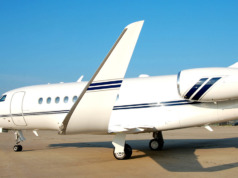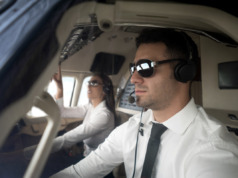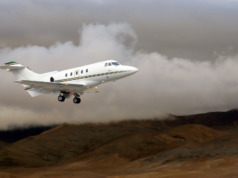One of the tasks of Aviation Team leaders is to develop “metrics” or “KPIs” (Key Performance Indicators) for their operation. Often, they create complex methods of tracking average fuel price, hours flown, and passenger loads. But when asked, “How do you track your customer service experience?” they may answer with another question: “What do you mean?” or “How could we measure something so subjective?”
What you seek is the confidence that your crew understands and therefore can deliver a “consistent customer experience” to you and your executives, one that meets your travel requirements every time you fly. So you must communicate those requirements precisely to your crew, to ensure that your aviation department can reliably repeat top level performance, flight after flight. That consistency of service also helps assure you that your team has risk management discipline throughout the operation. This is even more critical if you have multiple crews; standardized discipline on the flight deck avoids customer experiences that differ depending on who is flying.
Step 1: Define Your Expectations
“Aim at nothing and you’ll hit it every time.” – Zig Ziglar. You can’t measure performance when you don’t know your target. The first element of developing customer service metrics is establishing your Service Standards. The most effective method of doing so is to simply sit down and communicate your expectations to your Aviation Team. Just as your team depends on operations manuals that articulate when an aircraft must be powered and ready for passenger arrival, so too is it important to document the key elements of the customer service experience. Expectations might include:
- Schedule: When do you expect your crew to be on call? What is your expected minimum response time from phone call to wheels up? 60 minutes? 120 minutes?
- Supplemental Lift: When your aircraft is down for maintenance, what arrangements do you expect the crew to make for your substitute transportation?
- Extended Stays: When you stay at a destination for an extended period, do you expect your crew to remain onsite throughout your trip? If you make your aircraft available for charter, must they be available to fly revenue trips?
- Scope: How much of the passenger experience does your crew “own?” Airport to airport? Office to office to include ground transportation and/or hotels?
- Division of duties: Who is to be responsible for each component of the passenger experience? If you are struggling to identify these key elements, send two or three of your non-flight crew aviation team members on a trip. Ask them to document all the details they notice – from the initial trip alert to passenger ground departure arrangements upon return – that have an impact on the comfort and convenience of their trip.
Determining these standards also may require reaching out to your most frequent passengers, or others who support you and your passengers. These might include executive assistants, house managers, drivers, security professionals, and other executives. Ask them for their observations and suggestions for areas of improvement.
Step 2: Train to Your Standards
As you define your standards, offer your Aviation Team the right amount of guidance. Without such guidelines, a technically superior aviation team recently lost significant trust and credibility with their executives when they tried to provide the ultimate in customer experience (the “best of everything”) in a corporation whose cultural value is “No Privilege with Position.” Aviation customer service standards must stay between two guardrails: aligned with the larger corporate culture, and consistent in style and execution as similar functions within the company.
Practice makes perfect. Like any other procedure performed by your Aviation Team, service standards should be taught, reviewed, and practiced to ensure consistency and compliance. How will you orient new team members to your standards? If you don’t have a dedicated training officer, perhaps you can draw upon resources within the larger organization, or hire a consultant within or outside aviation.
Experiential training and benchmarking can have a great impact. If your organization hosts regular Board meetings, have your Aviation Team be a part of the planning committee. Working with the committee to develop these meetings can provide insights which enhance the aviation service standards. And the Aviation Team may provide a valuable perspective to the committee.
Step 3: Develop Your KPIs
Just as your Safety (Risk) Goals for the Aviation Team tend to be behaviorally based, so too are your customer service standards. On the wall of the scheduling department for an operator that regularly flies a large aircraft internationally is a sign in large black letters: “Days Since Last Error,” and under that, in red dry erase marker: “110.” Their aircraft owner is very sensitive to accuracy of trip information (ground arrangements, trip details, etc.) and the scheduling department found this to be a useful motivational tool. While perhaps more draconian than most Aviation Teams might adopt, it’s an example of great customer service metrics: simple, measurable, and specific.
Start with simple metrics based on the key customer service behaviors you’ve identified as critical. For example:
- All pre-departure activities completed by 30 minutes before scheduled departure.
- Accurate and complete passenger itinerary sent 24 hours before departure.
- Passengers addressed by name by all staff at all times.
- Aircraft vacuumed after each landing.
Occasionally, Aviation Teams use a customer feedback form or survey process. Surveys may generate reportable metrics if the questions are sufficiently specific, but often the frame of reference between individual survey participants is not consistent. For example, your most valued client and frequent passenger may expect different standards than does your junior manager. Surveys are valuable only when they measure against your defined service standards.
Step 4: Review and Refine
Consider instituting a system to track and document customer service “misses” and failures. This system is no different than the one your crew uses to document a missed cockpit checklist or breakdown in operational procedure. Create the discipline to review and share these as a team. Update your Service Standards and procedures as needed. While these misses and failures are not an operational risk, customer service mishaps are a brand and trust risk for the Aviation Team.
The best monitors for customer service are you and your own team members. Consider auditing your own Service Standards. You might invite each scheduler, maintenance technician, and pilot to ride on a trip, empty leg, or maintenance positioning flight as a passenger. During this observation flight, each can document the service experience and provide coaching and feedback to the rest of the crew and Aviation Team. These audit results can be recorded and used as a metric.
The only successful customer service metrics are those that align with your own expectations. Sharing these metrics or having them visible to your passengers will show that your team is paying attention to their needs. More importantly, confidence in the Aviation Team will grow. BAA
Don Henderson is Managing Director, Consulting Services, The VanAllen Group. Responsible for consulting activities from the C-Suite to the hangar floor, he helps Aviation Leaders and Teams become an integral part of the larger enterprise.





